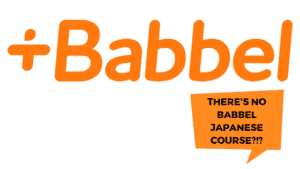Here at All Language Resources, we have identified various Japanese resources to help you with your language-learning journey.
Discover a multitude of Japanese learning resources, featuring mostly free resources and tools to enrich your Japanese learning experience.
Table of Contents
Japanese Learning Resource Summaries and Recommendations







Language Resources Specific to Learning Japanese
All Japanese Language Resources
- 16 Best Online Japanese Courses: Kanji, Grammar, & More
- 17 Minute Languages Review: I Wouldn’t Recommend Using It
- 50 Languages Mini-Review: Basically an online phrasebook
- AmazingTalker Mini Review: Not Our Top Pick for Web Classes
- Anki Mini-Review: The Go-To SRS Flashcard App
- Assimil Review — A Fresh Look at a Longstanding Resource
- Bab.la Mini-Review: Use WordReference or Linguee Instead
- Beelinguapp Mini-Review: Reading & Listening Practice
- Best App to Learn Japanese — we Tested Dozens
- Best Way To Learn Japanese – 15 Tips To Try Today
- Bilingual Oxford Dictionaries Mini Review: Handy Apps
- Bluebird Languages Mini-Review: Over 160 Languages Available
- BondLingo Mini-Review: Live Japanese Language School Classes
- Brainscape Mini-Review: Adaptive Flashcards
- BunPro Mini Review: Japanese Grammar Flashcards For N5–N1
- Busuu Review: Some Courses Are Better Than Others
- CaptionPop Mini-Review: Use The Free Version
- Casual Nihongo Mini-Review: Topics Mostly Focus on Dating
- Clozemaster Review: Limited Focus But Fun Way To Grow Vocab
- Complete Language Lessons Mini Review: Almost Useless
- Conversations by StoryLearning Mini-Review: There are Cheaper Options
- Cooljugator Mini-Review: Conjugations For Uncommon Languages
- Coursera Mini Review: Great for Beginners, but Limited Options
- Cudoo Review — I Wouldn’t Even Use it if it Were Free
- DeerPlus Mini Review: Fun Supplementary App
- Drops App Review – Decent As A Supplementary Resource
- Duolingo Review: Useful But Not Sufficient – 2 Language Learners Test It (With Video)
- Earworms Review – A Unique Idea But Lacks Substance
- Easiest way to learn Japanese
- Easy Languages Mini-Review: Interviews Around The Globe
- edX Mini-Review: Worth It If You Audit, Maybe Not If You Pay
- Eggbun Mini-Review: Excellent for Understanding Hangul
- Elon.io Mini Review: A Bit Messy
- Encore!!! Language Learning Mini-Review: Basically a Phrasebook
- Flowlingo Mini-Review: Has Potential, Still Developing
- Fluent Forever App Review – Lots Of Potential But Not There Yet
- FluentU Review — More Expensive than the Competition
- Forvo Mini-Review: Audio Pronunciation of Millions of Words
- FSI Courses Mini-Review: Free, Comprehensive, but Also Outdated
- FunEasyLearn Mini-Review: Build Vocabulary The Fun Way
- Genki Mini Review: Beginner-Friendly Japanese Textbooks
- Glossika Review – Not Cheap But Useful
- Go! Go! Nihon & Akamonkai Online Japanese Course Mini Review
- HelloTalk Review – Make Friends & Practice Languages
- Hey! Lingo Mini-Review: Has Useful Phrases
- HiNative Review: Useful But Not Exceptional Q&A App
- How long does it take to learn Japanese
- How to Learn Japanese – A Beginner’s Self-Study Guide to Fast Japanese Fluency
- Human Japanese Review: A Boutique App For Learning Japanese
- iLanguages Mini-Review: Almost Identical to Learn 101
- iLoveLanguages Mini-Review: Another Phrasebook SIte
- Imabi Mini Review: Thorough, Text-Based Lessons
- Instant Immersion Mini-Review: No Longer a Good Investment
- Internet Polyglot Mini-Review: Word Lists With Games
- italki Review – The Good, The Bad, & The Just Alright
- iTranslate Mini-Review: 5 Apps To Support Communication
- Japanese (Renzo Inc.) Mini Review: Excellent Organized Word Lists
- Japanese For Busy People Mini Review: Not That Great
- Japanese From Zero! Mini Review: Slow, Easy, Fun Textbooks
- Japanese Level Up Mini-Review: A Step Up From Basic SRS
- Japanese With Noriko Mini-Review: BIte-Sized Listening Practice
- JapanesePod101 Review – It Works Well As A Supplemental Resource
- Jisho Mini-Review: Search From Romaji, Kanji, or English
- Kanji Study Mini-Review: Comprehensive Dictionary and Flashcards
- Kanshudo Mini-Review: A Must-Have, And It’s Free!
- L-Lingo Mini-Review: Textbook Content, Depends On Your Style
- Lang Workbooks Mini Review: Thorough Writing Practice
- LangCorrect: Unlimited, Free Writing Practice With Feedback
- Language Learning WIth Netflix Mini-Review: Easy to Use
- Language101.com Course Review – The Worst I’ve Ever Tried!
- LanguagePod101 — All Languages, Pod101 and Class101
- Learn Japanese For Free: Creative and Time Tested Ways To Do It
- Learn Japanese: Bunpo Mini Review: One-Stop Grammar Practice
- Learn WIth Oliver Mini-Review: Simple With Lots of Content
- Learn101 Mini-Review: A Re-Formatted Version of iLanguages
- Lexilogos Mini-Review: A Resource Bank For Dictionaries and Books
- Ling Review — Gamified Practice in Less Common Languages
- Lingo Mastery Short Stories Mini-Review: Lots of Unique Words
- Lingodeer Review – A Better Alternative To Duolingo, Busuu, Rosetta Stone, etc.
- LingoHut Mini-Review: Good Intentions, So-So Follow Through
- LingQ Review – Extensive Reading Made Easy
- Lingua Boost Mini-Review: Use Pimsleur Instead
- LinguaLift Review – You’d Be Better Off Using A Textbook
- Linguee Mini-Review: Best Dictionary for Formal Language
- Live Lingua Review: My Experience With Their Lessons
- Living Language Online Course Review – Not Very Good
- Loecsen Mini-Review: Phrasebook App For Absolute Beginners
- LyricsTraining Mini-Review: Listening Practice Through Songs
- Manga-Sensei Mini-Review: Bite-Sized Podcasts and Lessons
- Mango Languages Review – Pretty Good For Beginners
- Marugoto Mini Review: Astonishlingly High-Quality and Free
- Master Any Language Mini-Review: No Words To Describe the Nope
- Memrise Review – Useful But Don’t Overuse It
- Miageru Mini Review: Useful for Drilling Beginner Japanese
- Michel Thomas Method Review – Avoid At All Costs
- Mimic Method Review: Trying Out The Elemental Sounds Courses
- Minna no Nihongo Mini Review: Thorough Japanese Textbooks
- Mondly Review – Made Significant Improvements Made in 2022
- Most Recommended Resources For Learning Japanese
- My Language Exchange Mini-Review: Millions of Active Users
- MyTest Migii Mini-Review: Thorough and organized JLPT Prep
- NHK World Mini Review: A Quality Introduction to Japanese
- OPLingo Mini Review: Community Driven, Non-Profit
- Optilingo Mini-Review: Use if You Absolutely Love Slideshows
- Our Top 30 Japanese Podcasts for Learners of All Levels
- Pimsleur Japanese Review – We Like It Because It Makes Me Speak Japanese From Day One
- Pimsleur Review — Learn While You… Do Just About Anything
- Polly Lingual Mini-Review: Phrasebook With Simple Games
- Preply Review – Tutors Created Tailored Lesson Plans for You
- Readlang Mini-Review: A Must-Have For Language Lovers
- Reverso Translation Mini-Review: Best for French learners
- Rocket Japanese Review – Exceeded My Low Expectations
- Rosetta Stone Review — Updated and Improved…And Needs More Improvement
- Rype App Review: I Wouldn’t Recommend It To Anybody
- Samidori Mini Review: Free Online Japanese Course
- Satori Reader Review – Engaging Japanese Texts and Dialogues
- Scripts Mini-Review: Flashy and Fast-Paced
- Shirabe Jisho Mini-Review: Great for Apple Users
- Simply Learn Mini-Review: Spaced Repetition Phrases For Travelers
- Skritter Review: Solid Chinese and Japanese Writing Practice
- Small Talk in Japanese Mini-Review: Covers Many Different Topics
- Speaky Review: Better Than Other Language Exchange Apps?
- Speechling Review – I Didn’t Know I Was Saying That Wrong!
- Speekoo Mini-Review: Dip Your Toes in a Language and Culture
- StoryLeaning Spanish Uncovered In-depth Review: One-of-a-kind and Surprisingly Effective & Enjoyable
- Storylearning Japanese Uncovered Review
- Strokes International Mini Review: Pricy but Comprehensive
- Sublearning Mini-Review: There Are Better Uses For Your Time
- SuperMemo Mini-Review: Not to Be Confused With Super-Memo
- Tae Kim’s Guide to Learning Japanese Mini-Review: Very Thorough
- Takoboto Mini-Review: Dictionary App With Conjugations
- Tandem Review: A Tinder-esque Language Exchange App?
- Tatoeba Mini-Review: A Community Writing Sentences in Context
- Teuida Mini Review: Fun and Efficient Way to Learn Korean or Japanese
- The Japanese Page Mini Review: Engaging and Unintimidating
- There’s No Babbel Japanese Course – Try These Alternatives Instead!
- TODAI Mini-Review: Decent, but Not Perfect
- Top 25 YouTube Channels For Learning Japanese – Beginner To Advanced
- Transparent Language Review – Not Exciting, But Language Offering Is So Vast That You May Need It
- uTalk Review – For Beginners Who Want To Learn Key Words & Phrases
- Verbix Mini-Review: Adequate for Less-Studied Languages
- Verbling Review: Online Classes With Helpful Revision Tools
- Vocabulearn Mini Review: Unlikely to Teach You a Language
- Vocly Mini-Review: Expand Your Vocabulary in Less Common Languages
- Wakarukana Mini-Review: Japanese Media You Can Understand
- Wanikani Review – A Useful Supplementary Tool For Studying Japanese
- Wasabi Mini Review: Japanese Classes & Self-Study Lessons
- Word Dive Review: Falls Short Compared To Similar Apps
- WordReference Mini-Review: Thorough and Professionally Translated
- Write Alphabet Mini-Review: Try Our Other Recommendations Instead
- Write It! Mini-Review: Simple and Straight-Forward
- Write Me Mini-Review: Learn Basic Scripts
- YesJapan Mini Review: Simple Explanations With Intuitive UI
- YouGlish Mini-Review: Thousands of Words in Context From YouTube

